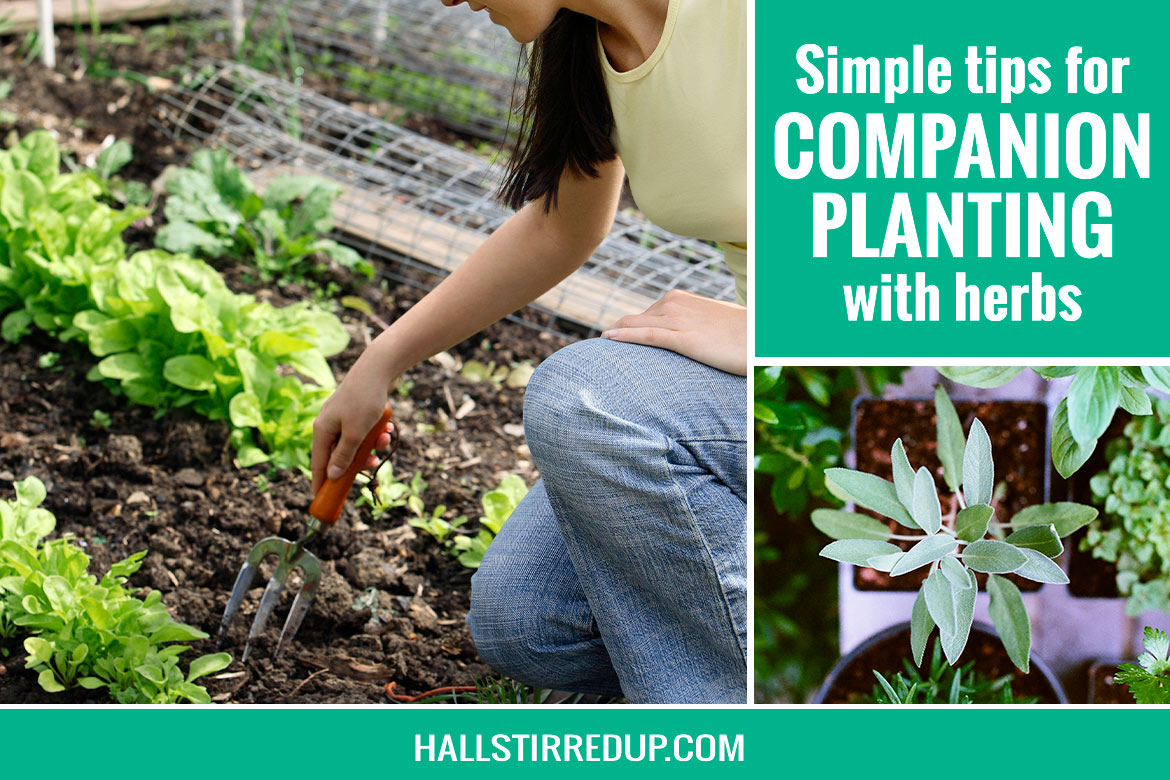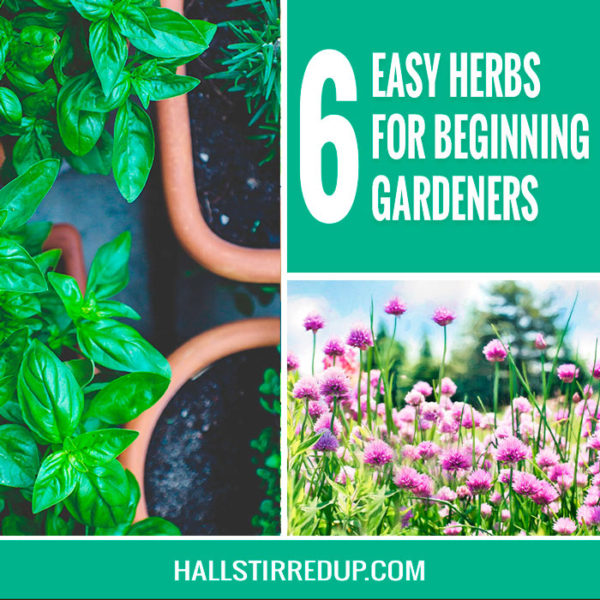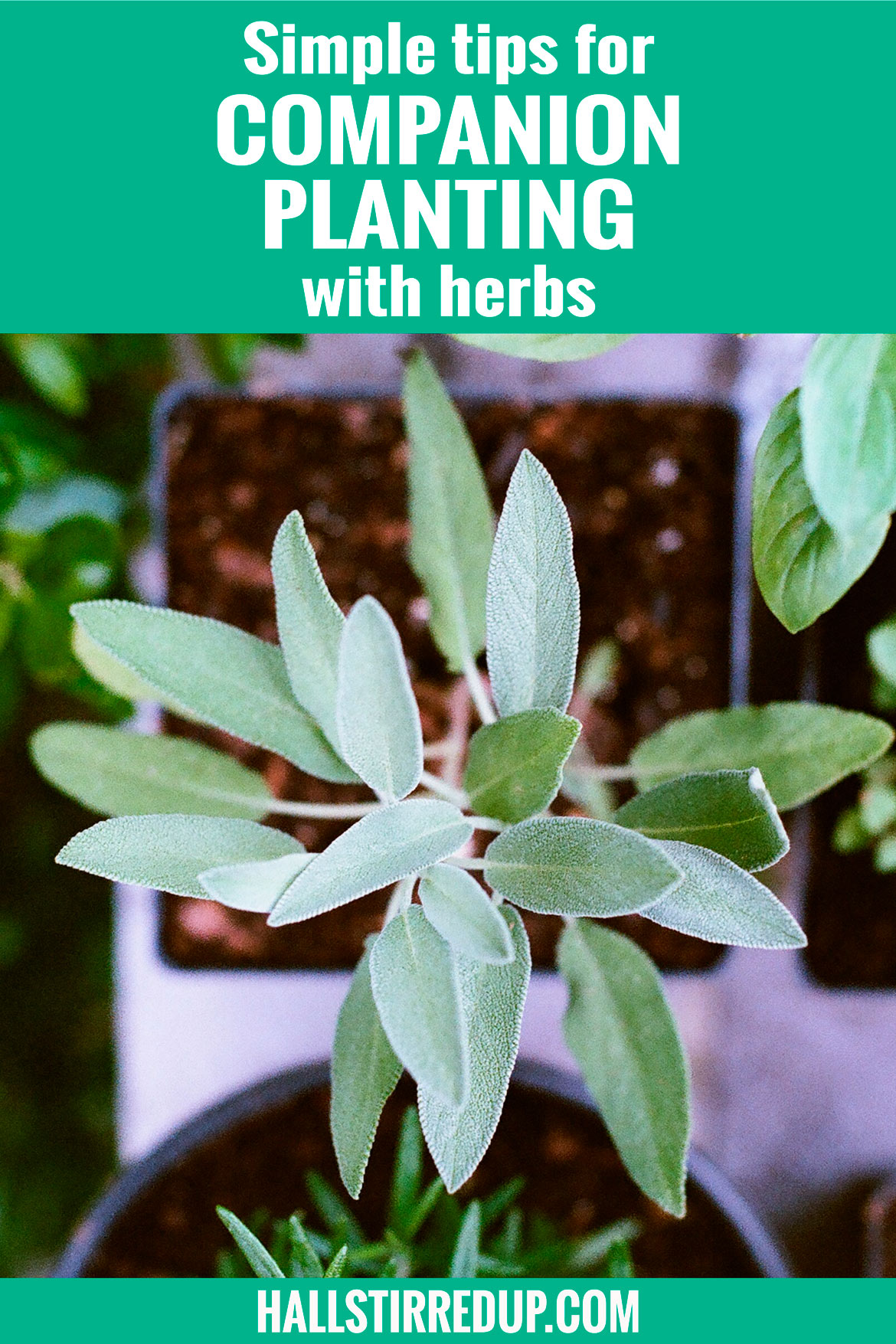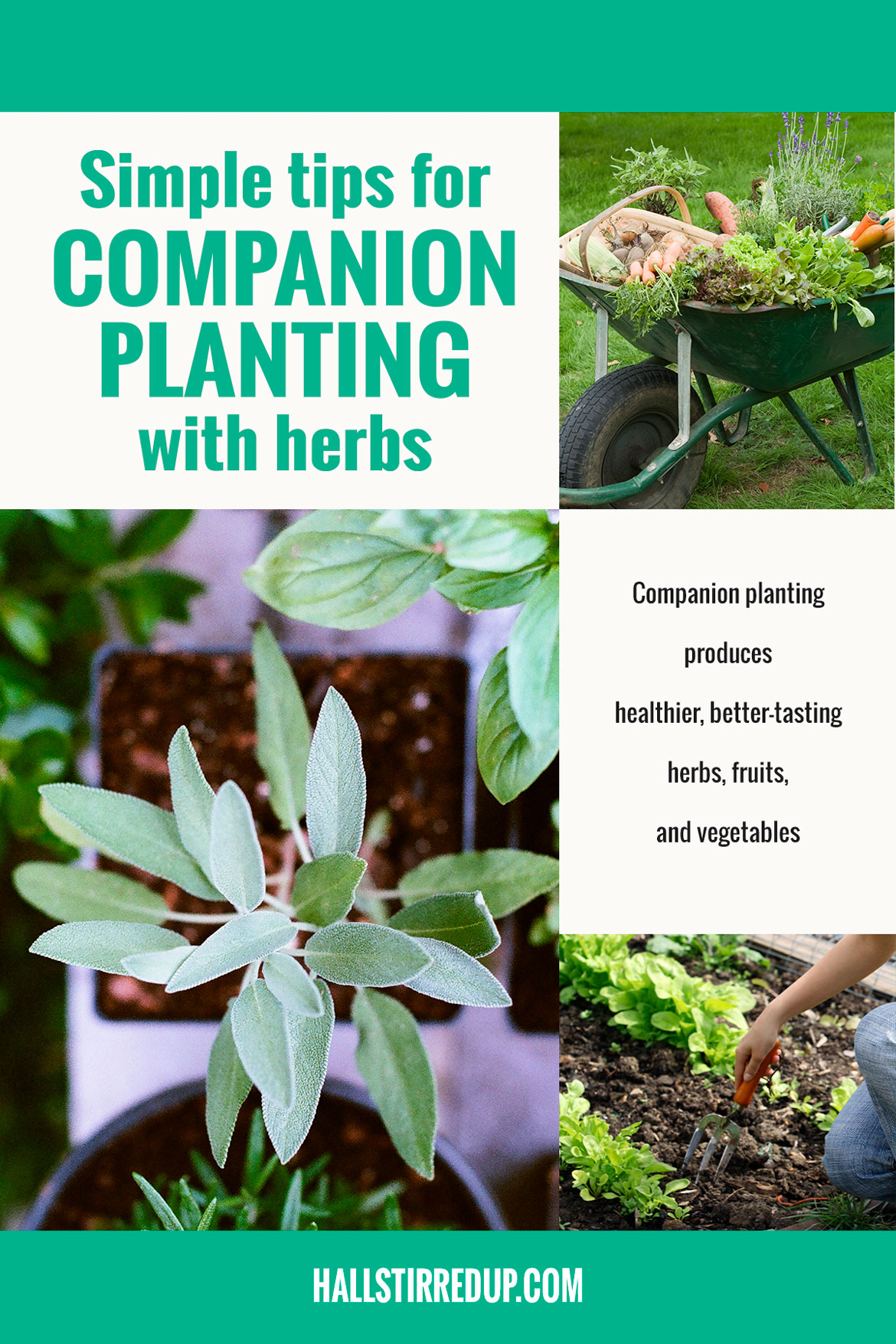
Simple Tips for Companion Planting with Herbs
Herbs are used for cooking and cleaning, and for centuries were the only medicine we had. Herbs are still a great way to create more flavorful meals, and give your health and immune system a boost. I’ve talked before about the health benefits of herbs, and in this post I’ll cover ways we can create companion planting with herbs, which just means growing together to meet their needs and enhance our vegetable gardens.
Growing herbs isn’t hard, and thankfully, many herbs do just fine together. With the right light, soil, and care, you can create an herb garden indoors or out. Here are a few different ideas to get you started.
Mediterranean Herbs
Mediterranean herbs include rosemary, oregano, sage, thyme, marjoram, and lavender. These herbs do well together because of their similar needs. Mediterranean herbs flourish in conditions similar to the dry and sandy soil and weather in the Mediterranean Basin. This means they’ll grow better in sunny, hot, and dry location. In your yard, this means 6+ hours a day.
Water-Loving Herbs
Basil, cilantro, tarragon, and parsley prefer more moisture in their soil compared to Mediterranean herbs, so plant these varieties together. When you plant things together that want the same type of soil, it makes your job a lot easier. Plus, you won’t have to worry about overwatering. Just provide good drainage, and allow the soil to dry between waterings.
Mint Herbs
Plants in the mint family include peppermint, spearmint, orange mint, lemon balm, and catmint. Plant your mints alone or with other types of mint, because they tend to overgrow and wind their way into other plants, stealing their water supply. Mint herbs will also cross-pollinate, so be careful when pairing together. If you’re interested in experimenting, they can create some interesting flavors.
Companions in Your Veggie Garden
You might want to consider planting herbs as companion plants for your vegetable garden. Many herbs protect vegetables and draw pollinators. For example, garlic, basil and cilantro grow well with tomatoes. Mint is helpful with cabbage or tomatoes. And many herbs will deter insects. Mint also helps deter carrot flies, and dill acts as a trap crop for tomato hornworms (make sure to plant a bit away from your tomatoes to draw them to the dill).
Use Pots
By far the simplest way to grow herbs is by planting in pots. By putting them in pots, you can easily give them individualized attention. You’ll also be able to move them around, and even extend your harvest time by moving them indoors.
Companion Planting With Herbs
Companion planting will produce healthier and better-tasting herbs. And when you use herbs as companions to your fruit and vegetables, you’ll reap a healthy, pest-resistant harvest!
Be Sure to Sign Up~
Before you go, click here to sign up! Subscribers receive post updates, direct links to my newest free printables and an exclusive digital desktop wallpaper of each month’s featured printable. Digital wallpapers are only available for the first month, so don’t miss out!
 Even more about herbs
Even more about herbs
Check out 6 easy to grow herbs
for the beginning gardener
Here’s a fun infographic
about medicinal herbs you can grow in pots
Read about the healing benefits of Chamomile
Sources:
Gardeningchannel.com
gardening therapy.ca
thespruce.com
Thanks to:
Photo by Markus Spiske on Unsplash
Photo by Dominika Roseclay from Pexels



Leave a Reply